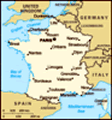Advertisement
Published: March 23rd 2019
Apologies to anyone who had trouble with the pictures in the last blog entry from St Guihem le Désert. There was a system problem that prevented all photos on all blogs from displaying for about a day and a half. All seems to be well again.
Carcassone We had google mapped Carcassonne before we left home but we cleverly just got off the train and started walking. We figured we could find the tourist office without a detailed map and we did. The very helpful lady gave us a city map and told us to turn left, go through the square, cross the bridge and follow the road up the hill to the entrance on the other side of the fortress. Twenty minutes. Piece of cake.
Pride goeth before a fall. We cut through the square and crossed the bridge. But it was the wrong bridge. I hadn’t noticed the “old” bridge behind a building so we headed up the wrong road. We eventually realized my mistake and figured out how to get back on track. There was a silver lining. The path we took to get to the fortress led us by the cemetery and we are

 Main entrance
Main entrance
The Fortress and city are free. You only have to pay to go into the castle itself and walk the ramparts. It's worth it.always dying to tour cemeteries. Ha ha.
La Cité de Carcassone The fortress we see today is pretty intimidating. The site has been occupied since early Roman times. Each new ruler of the city added new fortifications. The existing fortifications resisted all attempts to take over the city until the mid-1300s. It was one of the strongholds of the Cathars, considered heretical by the Church in Rome. The Cathars were subjected to the Albigensian Crusade in the early 1200s, a 20 year campaign to eliminate the “heresy” which quickly turned into a political movement to add Languedoc to the territory ruled by the French crown.
In the late 1300s, the fortress gradually started to decay and it was demilitarized after Napoleon. The French government ordered it demolished in 1849 but there was such an uproar that it was decided to restore it as a national monument.
The architect Eugène Viollet-le-Duc was put in charge of the renovations. His earlier works included many sites such as Notre Dame Cathedral, the
Basilica of Saint Denis, Mont Saint-Michel and Sainte-Chapelle. This is a pretty impressive body of work. You can read more about him by clicking
here (use the Back button to

 After the double portcullis is the moat
After the double portcullis is the moat
A view between the outer walls and the inner castlereturn to the blog). When you consider he was working in the mid-1800s without the aid of computers, his work is truly astounding. The intricacy of his drawings and plans is truly amazing. We did manage to tour most of the ramparts; the views are incredible. You can see the Pyrenees in the distance and we were surprised to find out Carassonne used to be on the border with Spain. The movement of the border away from Carcassonne in 1659 was one of the factors in its loss of strategic importance.
Back in the "new" city When we got back to the town of Carcassonne, we visited the tourist information again to ask where the library was. Libraries are always a good place to relax for an hour, check out the internet and charge cellphones and iPads, if required. Carcassonne didn’t disappoint. We even had a cappuccino in a little hole-in-the-wall place. We got to practice our French as the owner didn’t speak English.
Being a little smarter, on the return journey to the train station we plotted a return through the old town that would allow us to check out Bastion Saint-Martial and the Canal du
Midi which we had casually sauntered over on our way to the Castle. We came to a fairly high, blank stone wall. If we hadn’t just come from the fortress we would have been impressed with its size. But there was no obvious way through the wall to see what was on the other side. Go left or right? We chose left, which arguably was the wrong choice as we had to walk completely around the bastion to find the gate. We were astounded to find it was a park which was made to resemble the site of the crucifixion of Christ. The path led us through the park and up a hill to the top where there were three crosses and life sized statues. On the way were representations of the various Stations of the Cross. The park wasn’t terribly well maintained but was very peaceful. The bastion was one of five from the 15
th and 16
th century. It survived the religious wars, the Revolution and the expansion of the city. It was turned into the Calvaire Jardin around 1820 and almost demolished in 1900.
Leaving the Calvary Garden, we wandered back to the train station along the

 More towers
More towers
This view of the towers was taken from inside the old cemetery. Canal du Midi. This section of the canal was not too interesting but then we had had quite a day in the fortress. With Avignon and Nîmes on the horizon, there is lots to look forward to. ToBeContinued.
Advertisement
Tot: 0.122s; Tpl: 0.014s; cc: 12; qc: 28; dbt: 0.0515s; 1; m:domysql w:travelblog (10.17.0.13); sld: 1;
; mem: 1.1mb






















